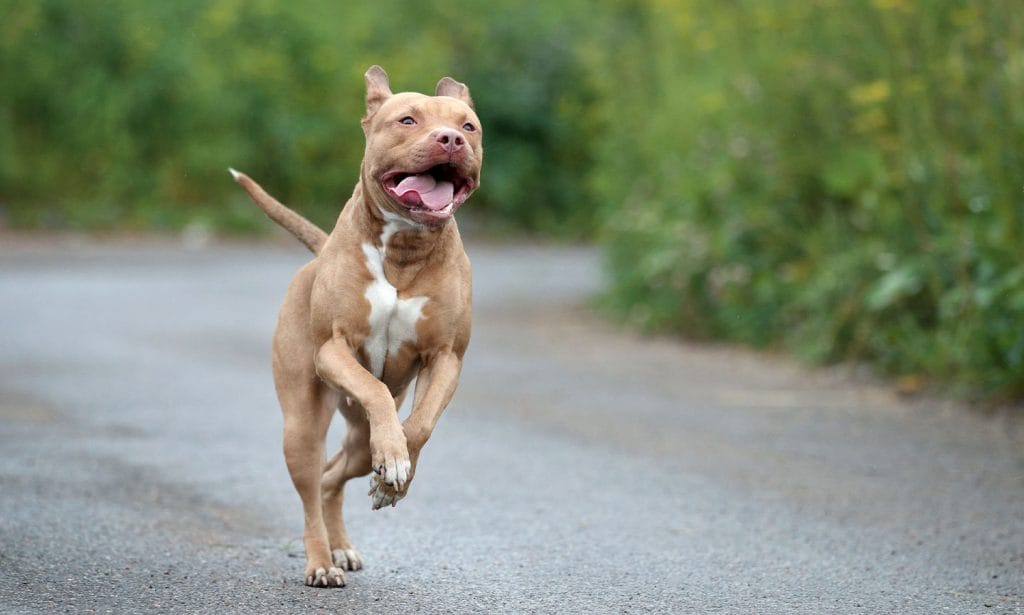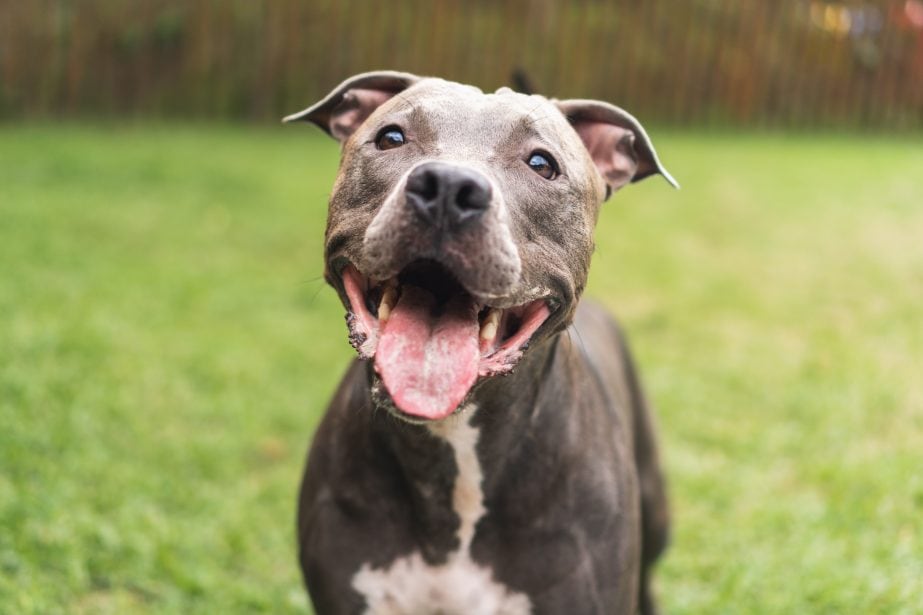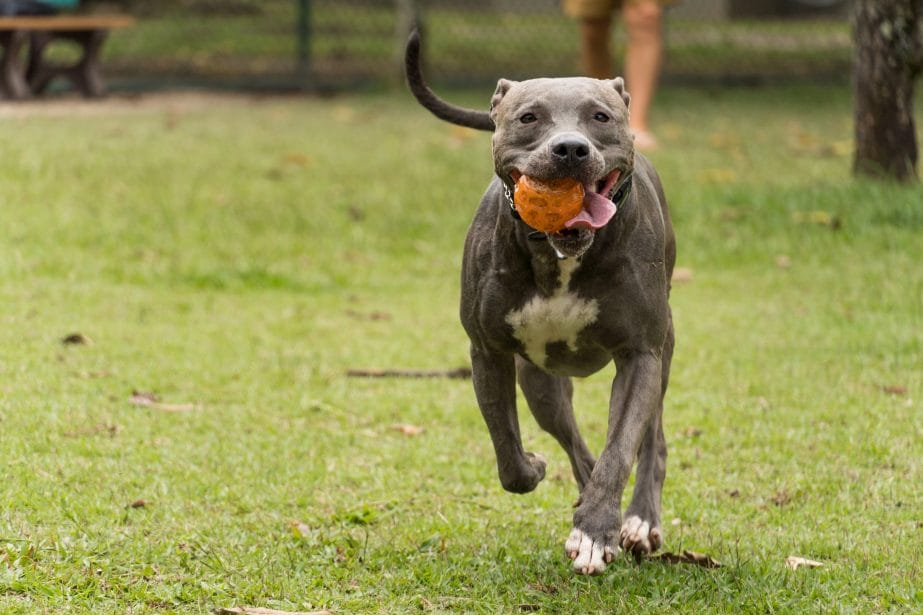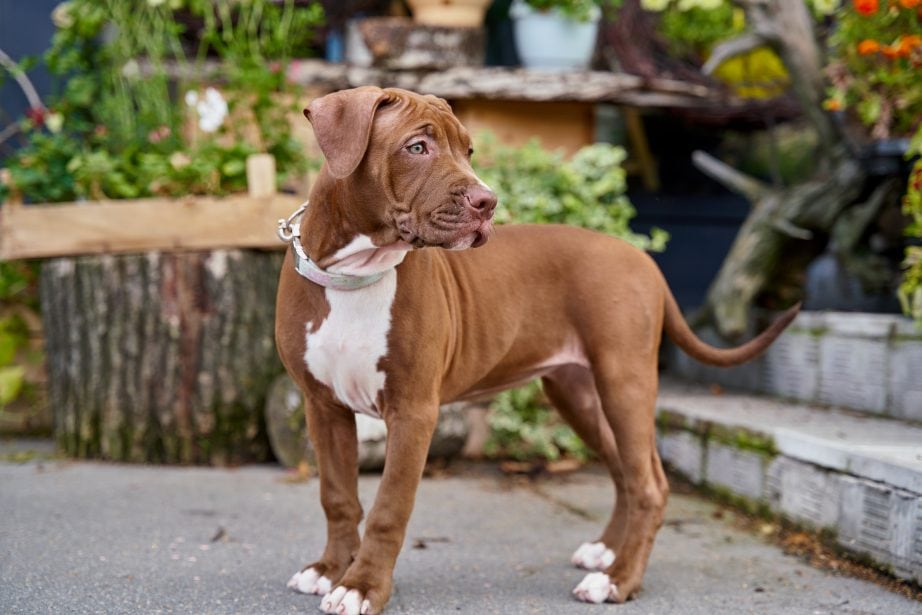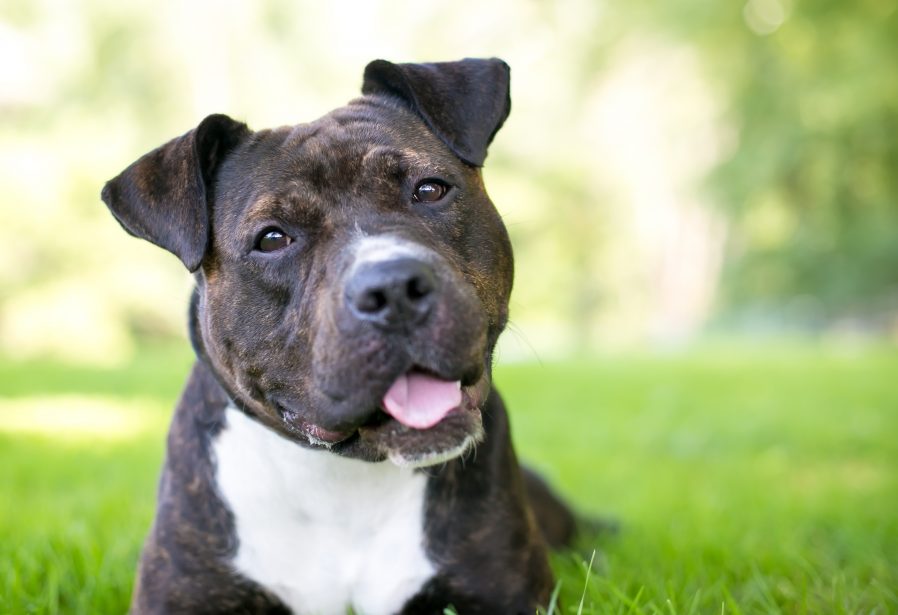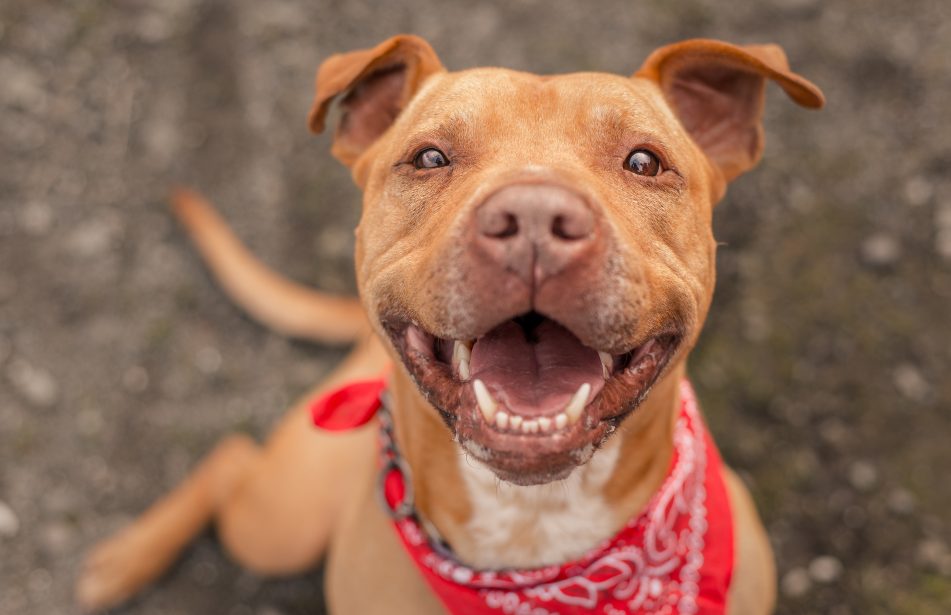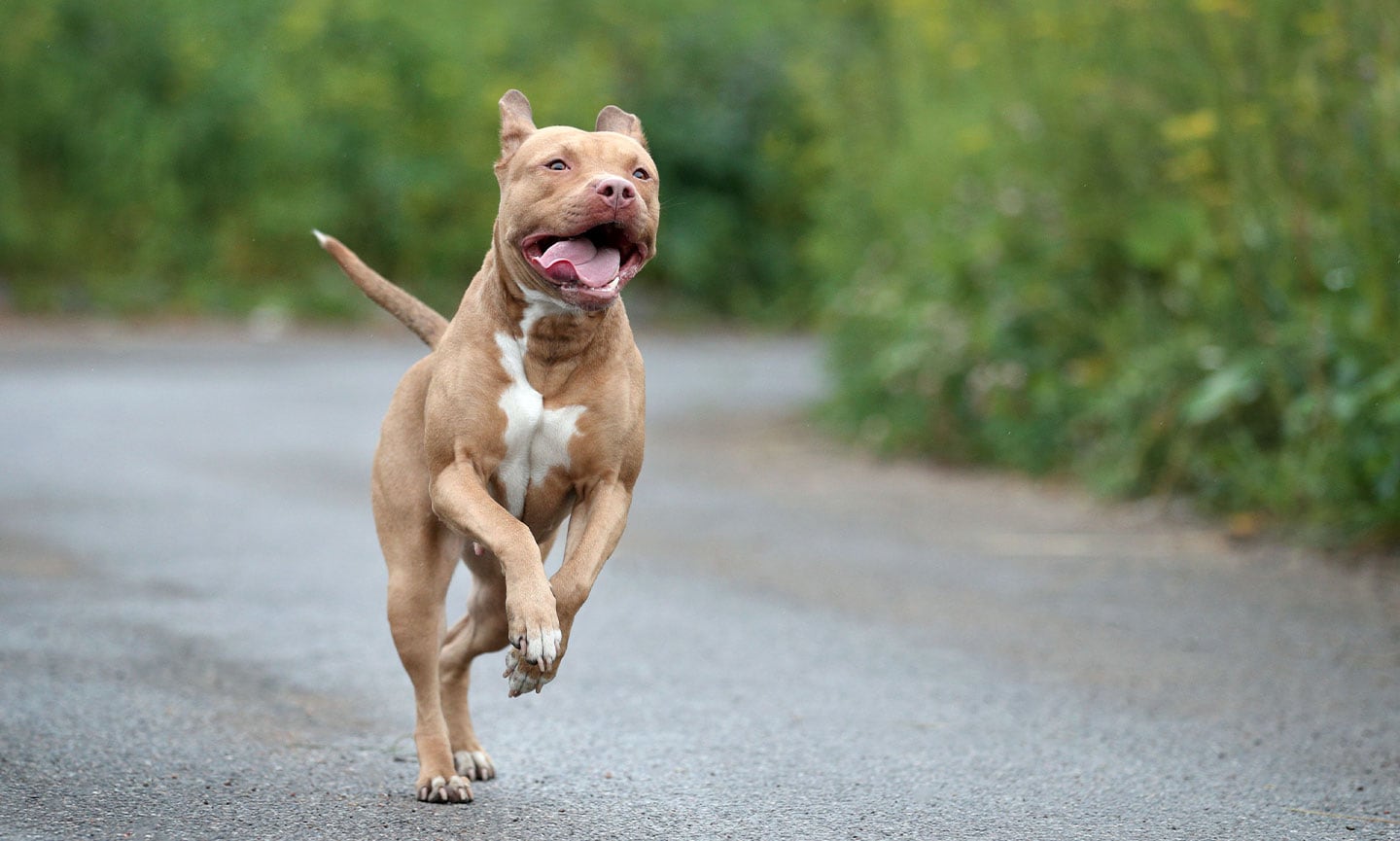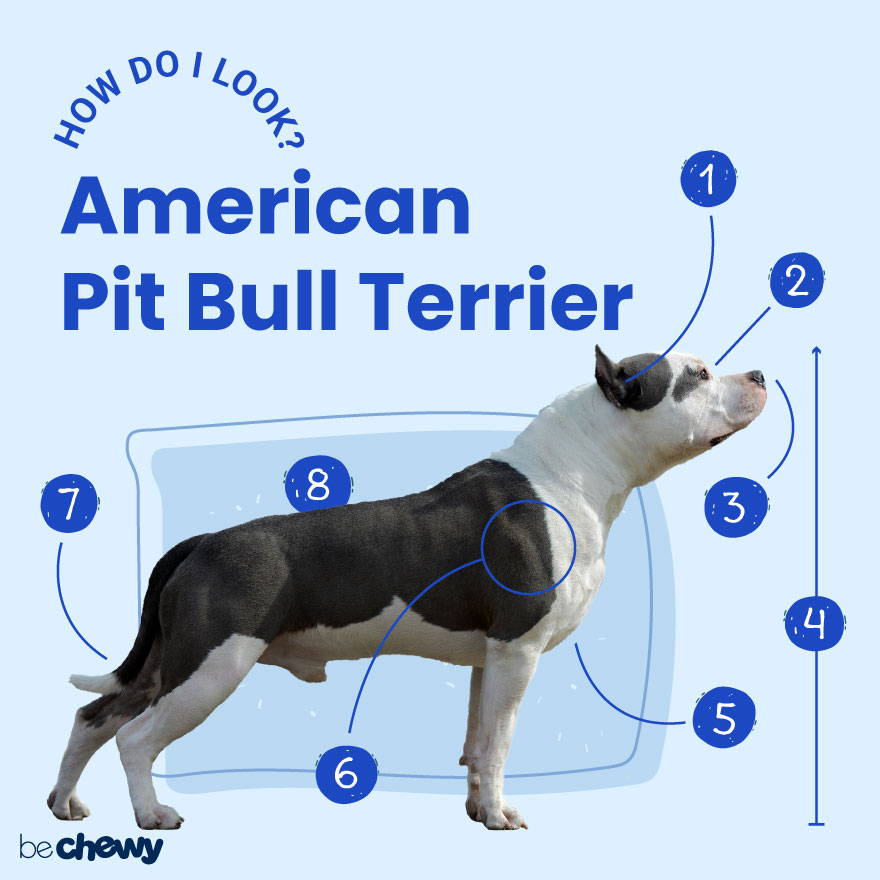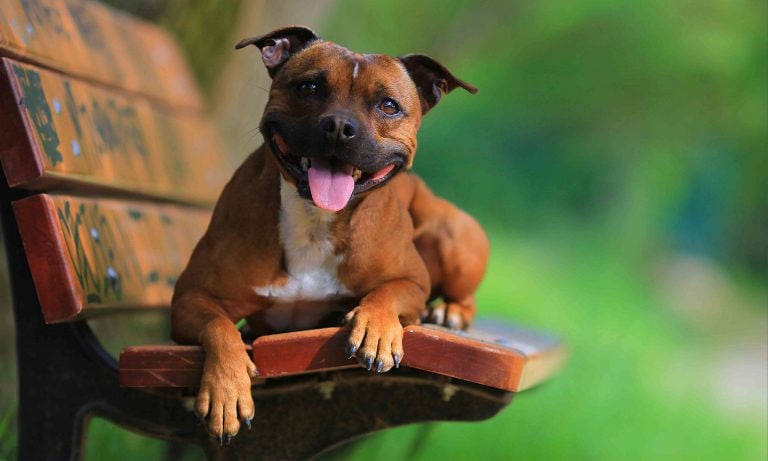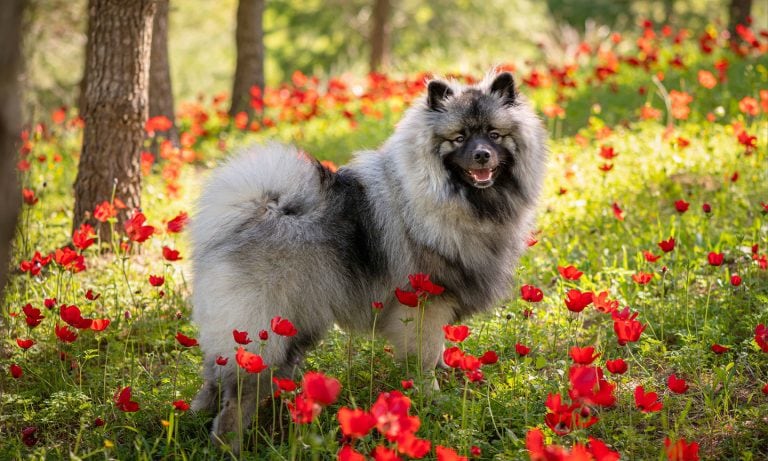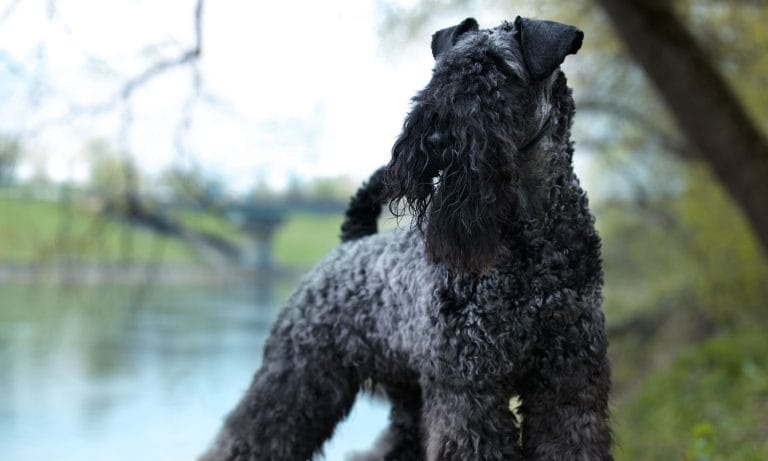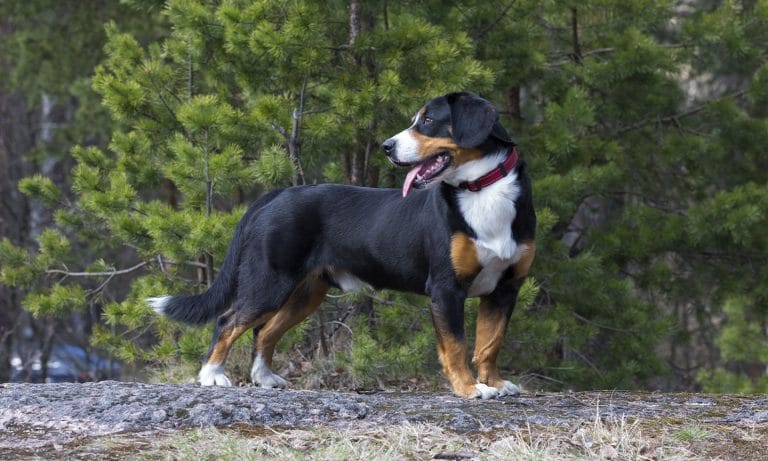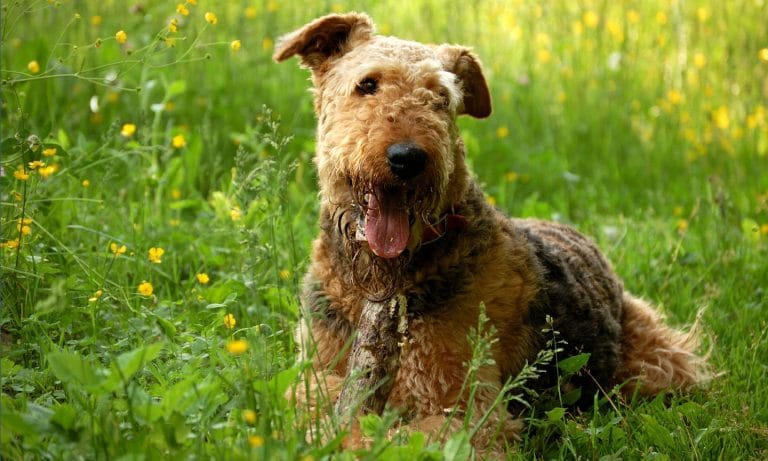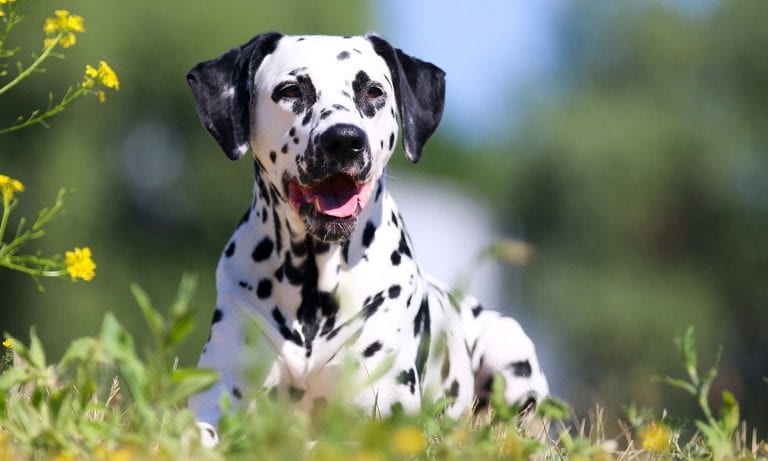The American Pit Bull Terrier is a canine Hollywood star with a complicated history. Athletic and energetic, they were originally bred for fighting pits in 19th century England and America, but due to their love of people and eagerness to please, became popular family pets and dog actors. They’re related to American Staffordshire Terriers, Staffordshire Bull Terriers and Bull Terriers—all of which are often lumped together under the loose term “pit bull,” and tend to share an unfair reputation for their fighting past. But to those who truly know and appreciate them, the ABPT is an enthusiastic and loyal companion.
Breed Snapshot
Temperament:
ActiveLoyalEager To PleaseCoat Color:
WhiteBlackBrownGrayBrindleFawnTanBlueRed
Best For
The American Pit Bull Terrier is a strong, agile and loyal breed known for their muscular build and athleticism. Originally bred for pit fighting, they evolved into beloved family pets. Today, they make affectionate companions and thrive in active households that offer proper training and socialization.
American Pit Bull Terrier Temperament
Your American Pit Bull Terrier would take a bullet for you but would still be a lousy guard dog. That’s because they tend to become BFFs with everyone they meet when they’re properly trained and socialized. Contrary to what you may have heard, this friendly—even goofy—breed brims over with enthusiasm for humans (even strangers), and one of their strongest desires is to please their families.
With one of these pups at your side, you should be prepared for lots of sloppy kisses and a constant shadow following you everywhere you go. You couldn’t ask for a better family companion, and their well-noted love of children is a definite plus. While untrained Pitties can have a tendency to chase after small animals like cats or squirrels (thanks to their herding history), aggression towards humans is uncharacteristic of the breed, and biting is no more prevalent than among any other type of dog. With the right amount of patience and training, your pet can live peacefully with any four-legged sibling at home, once you make the proper introductions.
How to Care for a American Pit Bull Terrier
The athletic, high-energy American Pit Bull Terrier loves to play and needs a lot of mental and physical stimulation. Don’t even think about leaving them with a dog toy in your living room and calling it a day unless you want a chewed-up sofa. Boredom is lethal for this breed—these pups really want to hang out with you while also working their mind and body. The good news? The time you’ll be putting into their daily exercise and training is nicely balanced out by their relatively low-maintenance grooming needs.
American Pit Bull Terrier Health
The American Pit Bull Terrier has a life expectancy of 12 to 14 years and can be susceptible to a range of health issues. It is important to be aware of potential health problems, so you can help your pup live the healthiest life possible.
- Hip Dysplasia: This inherited disease is common in bully breeds. It causes their hip joints to form improperly and can lead to arthritis. If your pup has difficulty getting up or develops lameness in their hind legs, take them to the vet to get X-rays of their joints and have their arthritis managed with medication. In severe cases, surgery can be an option.
- Knee Problems: The cranial cruciate ligament (or CCL), which is one of the most important stabilizers inside the knee (in humans called the anterior cruciate ligament, or ACL), can rupture over time. When the CCL becomes damaged or torn in a dog, surgery is typically required to repair it.
- Skin Infections: A lack of zinc or an inability to absorb it could make your American Pit Bull Terrier prone to zinc-responsive dermatosis, a type of skin infection. To treat the symptoms, which can include lesions on the nose and foot pads or red, oozing skin around the face, vets can prescribe a regimen of zinc to add to your dog’s diet. Allergies can also cause skin issues. More on that below.
- Allergies: Bully breeds are very susceptible to a variety of allergic triggers and have chronic skin issues as a result. Allergies can be triggered by diet ingredients or environmental factors including pollens, grasses, flea activity, and dust mites inside the home. Affected dogs may develop symptoms that include itching, skin rashes, redness of the skin and hair loss.
- Blindness: Bully breeds are slightly more likely to develop cataracts as they age. Cataracts are cloudy areas that develop in the lens of the eye, causing affected dogs to have a progressive loss of vision. Symptoms may include a white, hazy appearance to the lenses, poor vision in low light, and clumsiness or disorientation in unfamiliar spaces. This condition can be treated with surgery to remove the cataracts.
American Pit Bull Terrier History
The American Pit Bull Terrier is one of several breeds who can trace their origin all the way back to the now-extinct Old English Bulldog and Old English Terriers. Such dogs were crossbred to fight each other in the dog fighting pits of England.
In the late 19th century, European immigrants brought some of these dogs to the U.S. Here they found work on farms and ranches, catching hogs, hunting, driving livestock, and acting as family companions. As they gained in popularity, so did the desire for them to be officially recognized as a breed. In 1898, the U.S.-based United Kennel Club recognized the American Pit Bull Terrier, with the first dog to be registered belonging to the club’s founder. Then in 1909, the breed was recognized by the American Dog Breeders Association.
Meanwhile, back in the UK, dogs crossbred for pit fighting split off into two different breeds: Bull Terrier and Staffordshire Bull Terrier.
Notably, the APBT is not recognized by the American Kennel Club. In an attempt to separate the breed from their negative past as a fighter, the AKC decided instead to acknowledge a subset of the population, eventually settling on the name American Staffordshire Terrier. The first group were entered in the AKC registry in 1936, after the AKC was assured by breeders that they would not allow their dogs to be used for dogfighting.
All of these types of dogs fall under the umbrella term of “pitbull.”
Are you looking to add an American Pit Bull Terrier to your home as a pet? You can find a list of reputable breeders on the United Kennel Club website. The average American Pit Bull Terrier cost is anywhere from $1,300 to $2,500 for a pup who’s been screened for health and temperament issues and may even come with pedigree papers. You can also reach out to American Pit Bull Terrier rescue organization to adopt or keep an eye out for the breed at your local animal shelter. Learn more about adopting a dog.
FAQs
Do American Pit Bull Terriers shed?
Yes, American Pit Bull Terriers shed, although less than other breeds due to their single coat. They shed a little throughout the year and a bit more when the seasons change in fall and spring.
Are American Pit Bull Terriers aggressive or dangerous?
No, American Pit Bull Terriers are not naturally aggressive or dangerous, though like any other type of dog, they can become that way due to neglect, abuse, lack of training and irresponsible pet parents. With proper training and socialization, Pitties will not exhibit these traits.
How long do American Pit Bull Terriers live?
American Pit Bull Terriers may live, on average, between 12 to 14 years.
How big do American Pit Bull Terriers get?
American Pit Bull Terriers may grow as tall as 21 inches and their weight may go up to 65 pounds.
What are the most common American Pit Bull Terrier mixes?
- American Pit Bull Terrier-Labrador Retriever mix (Labrabull)
- American Pit Bull Terrier-American Bulldog mix (Pitbull Bulldog)
- American Pit Bull Terrier-Doberman Pinscher mix (Dober Pit or Pit Pinscher)
- American Pit Bull Terrier-Jack Russell Terrier mix (Jack Pit)
- American Pit Bull Terrier-Mastiff mix (Pit Mastiff or an American Masti-Bull)
Note: These are not purebred dogs but mixed breeds.
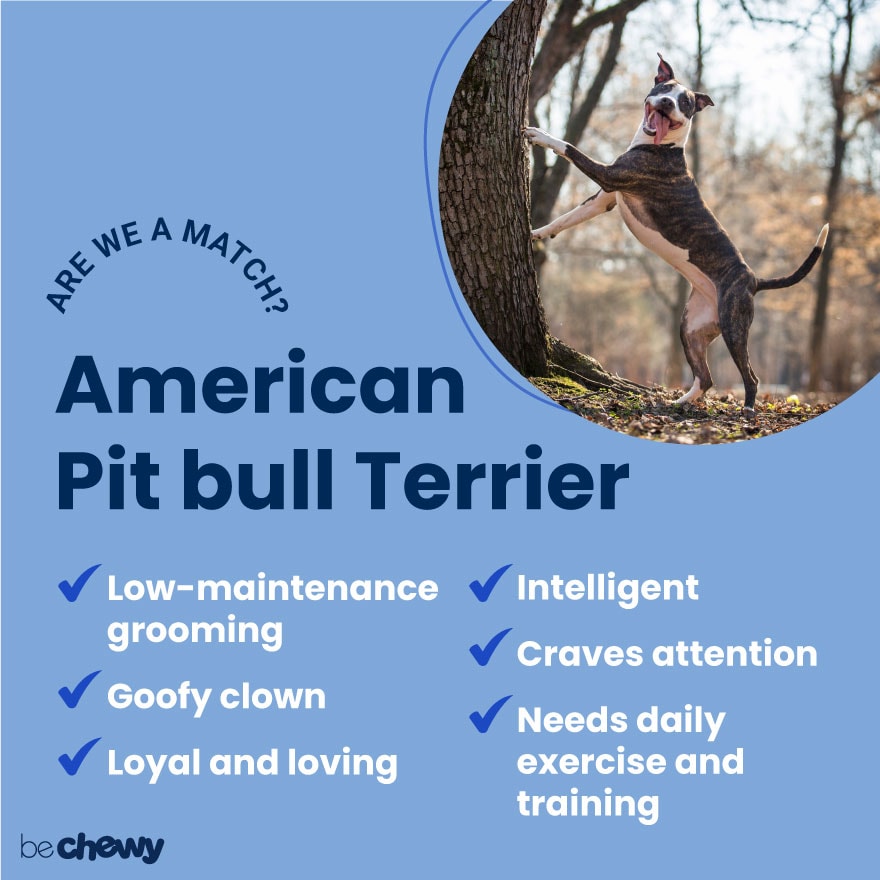
Top Takeaways
American Pit Bull Terriers are known equally for their brawn as well as for their brains, but they need some love and help to reach their full potential. But seriously, don’t we all? Exceptionally energetic and friendly, these dogs require daily exercise for their mind and body and don’t like to be left alone for long periods. These loyal companions are teammates for life and will do anything to please their humans, but they do best with experienced pet parents who have the patience and time to keep them focused. Since they do love to engage in rough play, they should be supervised around young children.
Expert input provided by certified dog trainer and behavior consultant Ivan M. Petersen, founder of Dog Wizardry, and veterinarian Dr. Corey Shagensky, DVM, founder and owner of Progressive Animal Wellness in Avon, Conn.
Breed characteristic ratings provided by Dr. Sarah J. Wooten, DVM, CVJ, a veterinarian at Sheep Draw Veterinary Hospital in Greeley, Colorado; dog trainer and behavior consultant Irith Bloom, CPDT-KSA, CBCC-KA, CDBC, owner of The Sophisticated Dog, LLC, in Los Angeles; and certified animal behavior consultant Amy Shojai, CABC, in Sherman, Texas.
The health content was medically reviewed by Chewy vets.

Search for Adoptable American Pit Bull Terriers Near You
Top American Pit Bull Terrier Names
These are the top American Pit Bull Terrier names as chosen by Chewy's pet parents!
Female Names
- Luna
- Bella
- Nova
- Nala
- Lola
- Daisy
- Athena
- Stella
- Harley
- Lucy
Male Names
- Zeus
- Blue
- Ace
- King
- Apollo
- Diesel
- Rocky
- Loki
- Tank
- Thor
Share:
